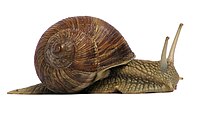
Main patterns of radula formation and ontogeny in Gastropoda
Sign Up to like & getrecommendations! Published in 2022 at "Journal of Morphology"
DOI: 10.1002/jmor.21538
Abstract: Gastropoda is morphologically highly variable and broadly distributed group of mollusks. Due to the high morphological and functional diversity of the feeding apparatus gastropods follow a broad range of feeding strategies: from detritivory to highly… read more here.
Keywords: gastropoda; morphology; radula; formation ... See more keywords

In slow motion: radula motion pattern and forces exerted to the substrate in the land snail Cornu aspersum (Mollusca, Gastropoda) during feeding
Sign Up to like & getrecommendations! Published in 2019 at "Royal Society Open Science"
DOI: 10.1098/rsos.190222
Abstract: The radula is the anatomical structure used for feeding in most species of Mollusca. Previous studies have revealed that radulae can be adapted to the food or the substrate the food lies on, but the… read more here.
Keywords: motion; cornu aspersum; forces exerted; land snail ... See more keywords

Evolutionary Divergence and Radula Diversification in Two Ecomorphs from an Adaptive Radiation of Freshwater Snails
Sign Up to like & getrecommendations! Published in 2022 at "Genes"
DOI: 10.3390/genes13061029
Abstract: (1) Background: Adaptive diversification of complex traits plays a pivotal role in the evolution of organismal diversity. In the freshwater snail genus Tylomelania, adaptive radiations were likely promoted by trophic specialization via diversification of their… read more here.
Keywords: freshwater; radula diversification; diversification; radula ... See more keywords

The Influence of Serpentine Soil on the Early Development of a Non-Serpentine African Thistle, Berkheya radula (Harv.) De Wild
Sign Up to like & getrecommendations! Published in 2022 at "Plants"
DOI: 10.3390/plants11182360
Abstract: Serpentine soils are rich in heavy metals and poor in nutrients, limiting plant species’ performance and survival. Nevertheless, specificities of such limitations as well as adaptability features required for thriving in serpentine environments are barely… read more here.
Keywords: development; heavy metals; radula; non serpentine ... See more keywords